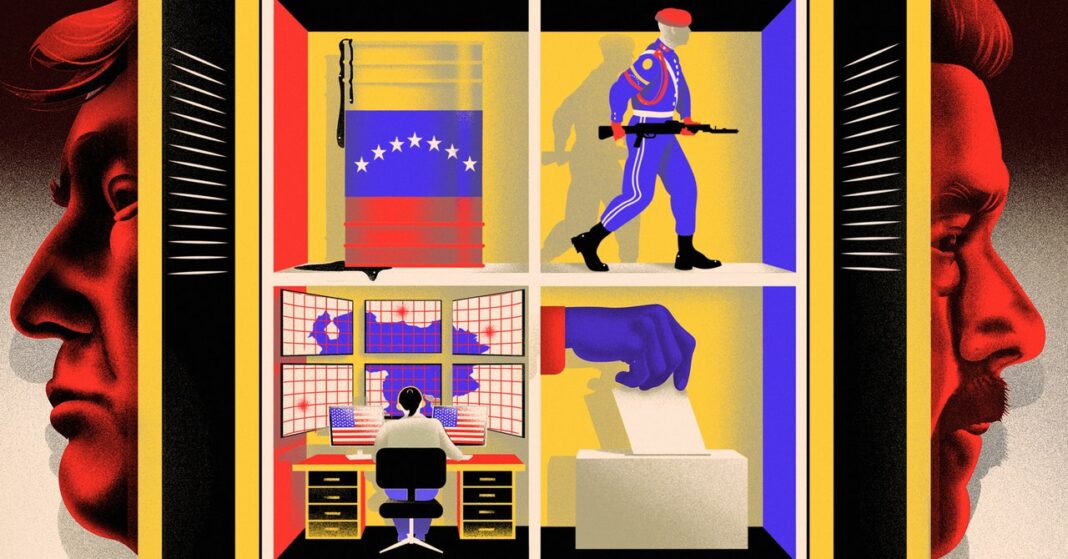On September 26, 2018, Venezuelan president Nicolás Maduro approached the lectern at the United Nations General Assembly in New York City. Hulking and mustachioed, wearing a black suit and a bright red tie, Maduro was in a bilious mood.
At home, Maduro’s political position was deteriorating. The former bus driver turned autocrat had ruled Venezuela for five years, and had recently “won” reelection in a contest widely considered to be fraudulent. But he was facing stiffer-than-expected pushback. Anti-government protests were wracking the oil-rich South American nation. Hyperinflation was obliterating its economy. More than a million Venezuelans had fled, triggering a hemispheric refugee crisis.
For some time, the Trump administration had been working furiously to push Maduro—an ally of Cuba and Russia—out of power. In fact, then-president Donald Trump had even mused publicly…



